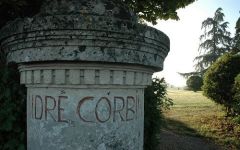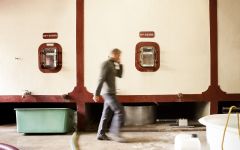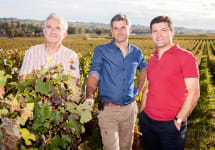Chateau Saint-Andre Corbin 2016
-
James
Suckling -
Wine
Enthusiast



Product Details
Your Rating
Somm Note
Winemaker Notes
Purple color, dark, purple hues. Smoked, blackberry aromas, liquorice aromas, vanilla aromas.Crunchy, powerful, full, black fruit hints, spice hints, fleshy tannin, long length.
Professional Ratings
-
James Suckling
The nose is framed in cedary oak and delivers an attractive core of bright, ripe red and purple fruit. The palate has an assertive, bright and nicely structured core with fresh acidity at the finish.
-
Wine Enthusiast
From one of a pair of estates owned by the Saby family, this wine is powerful with tannins and rich with blackberry fruits. A perfumed character gives it spice as well as great fruitiness.
Other Vintages
2021-
Wine
Enthusiast -
Wilfred
Wong
-
Wine
Enthusiast -
James
Suckling
-
James
Suckling -
Wine
Enthusiast -
Wilfred
Wong
-
James
Suckling -
Wilfred
Wong -
Wine
Enthusiast
-
Wine
Enthusiast







Château Saint Andre Corbin is located in Bordeaux’s smallest appellation just north of the village of Saint Emilion. Both the estate and vineyards date to the Gallo-Roman time. Letters from the Roman Consul and poet Ausonius to Rome indicate that wine from this estate was served at Julius Cesar’s table in the 4th century. Archaeological evidence suggests that the current château is built over the original Ausonius Villa (The famous Château Ausone did not exist prior to the 18th Century). Extensive archaeological excavations at Château Saint Andre Corbin have resulted in spectacular discoveries, including an intact Venus, which is in the Museum of Aquitaine in Bordeaux, and an intact Diana, which now resides in the Louvre Museum in Paris.
The property is owned by the dynamic Saby family who have been making wine on the right bank for 9 generations. Today, brothers Jean-Philippe and Jean-Christophe Saby, both of whom are experienced oenologists and agricultural engineers, own and manage the estate as well as numerous ones in the St. Emilion region of Bordeaux.

One of the world’s most classic and popular styles of red wine, Bordeaux-inspired blends have spread from their homeland in France to nearly every corner of the New World. Typically based on either Cabernet Sauvignon or Merlot and supported by Cabernet Franc, Malbec and Petit Verdot, the best of these are densely hued, fragrant, full of fruit and boast a structure that begs for cellar time. Somm Secret—Blends from Bordeaux are generally earthier compared to those from the New World, which tend to be fruit-dominant.

Marked by its historic fortified village—perhaps the prettiest in all of Bordeaux, the St-Émilion appellation, along with its neighboring village of Pomerol, are leaders in quality on the Right Bank of Bordeaux. These Merlot-dominant red wines (complemented by various amounts of Cabernet Franc and/or Cabernet Sauvignon) remain some of the most admired and collected wines of the world.
St-Émilion has the longest history in wine production in Bordeaux—longer than the Left Bank—dating back to an 8th century monk named Saint Émilion who became a hermit in one of the many limestone caves scattered throughout the area.
Today St-Émilion is made up of hundreds of independent farmers dedicated to the same thing: growing Merlot and Cabernet Franc (and tiny amounts of Cabernet Sauvignon). While always roughly the same blend, the wines of St-Émilion vary considerably depending on the soil upon which they are grown—and the soils do vary considerably throughout the region.
The chateaux with the highest classification (Premier Grand Cru Classés) are on gravel-rich soils or steep, clay-limestone hillsides. There are only four given the highest rank, called Premier Grand Cru Classés A (Chateau Cheval Blanc, Ausone, Angélus, Pavie) and 14 are Premier Grand Cru Classés B. Much of the rest of the vineyards in the appellation are on flatter land where the soils are a mix of gravel, sand and alluvial matter.
Great wines from St-Émilion will be deep in color, and might have characteristics of blackberry liqueur, black raspberry, licorice, chocolate, grilled meat, earth or truffles. They will be bold, layered and lush.
